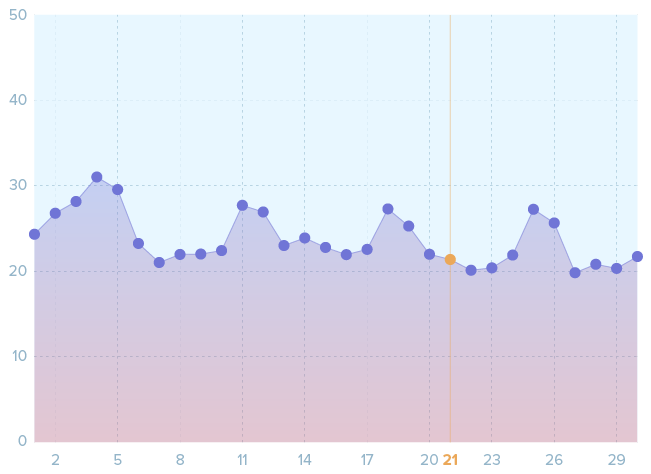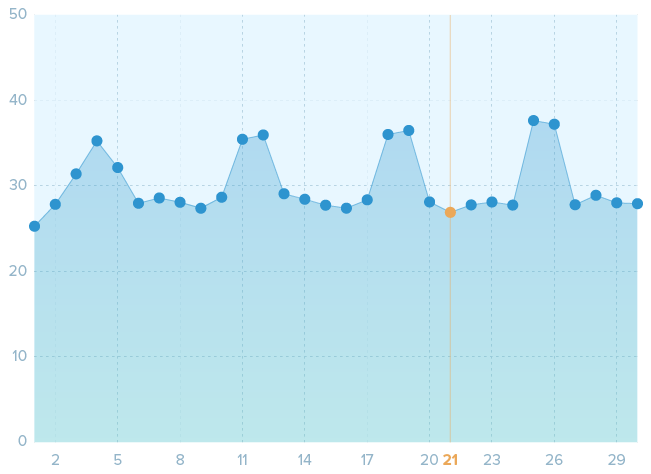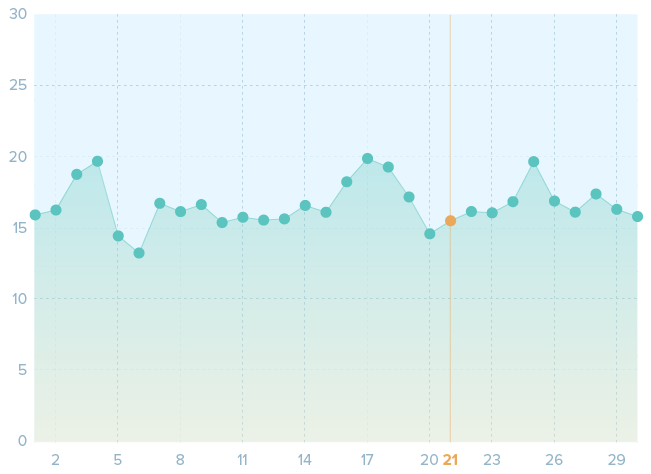
| Quarterly Main Page
How Google’s
‘Mobilegeddon’ & Facebook’s News Feed Changes Affect Traffic

Andy Chen & Jeiran Jahani
On April 21st, two major changes took place with referral traffic: Google changed its search algorithm to favor mobile-friendly sites in its mobile search results [1], and Facebook tuned its News Feed to show more content from users’ friends (and less from companies and pages they’ve Liked) [2]. To see how these changes affected the thousands of publishers that use Chartbeat, we looked at Google and Facebook referral traffic across our network.
Google’s “Mobilegeddon”
Across the Chartbeat network of 55,000+ domains, roughly a quarter of sites are not yet mobile-friendly according to Google’s Mobile-Friendly Test tool. Now that Google is expanding its use of mobile-friendliness to determine mobile search rankings, we might expect mobile Google search traffic to decrease for non-mobile-friendly sites and increase for sites that are mobile-optimized. To see how Google’s algorithm change affected mobile search traffic, we looked at mobile-friendly and non-mobile friendly sites to examine their traffic before and after the change.
In the three weeks leading up to April 21st, 24% of traffic from Google searches to non-mobile-friendly sites came from mobile devices. In the week after the change, this fraction dropped slightly to 21%. Of the mobile-friendly sites we looked at, this figure did not change significantly, hovering around 28% before and after the 21st.
Percent of Traffic from Google Searches to Non-mobile-friendly Sites from Mobile Devices
This number peaks during the weekends, but there’s no pronounced change on the 21st.

Figure 1
Percent of Traffic from Google Searches to Mobile-friendly Sites from Mobile Devices
This number peaks during the weekends, but there’s no pronounced change on the 21st.

Figure 2
This means while traffic to non-mobile-friendly sites was impacted, the changes have been minimal. If a site is not yet mobile-friendly, its mobile Google traffic might have decreased slightly, but Google is still showing the site in its mobile search results. If a site is already mobile-friendly, that site might have seen a slight increase in mobile searches since April 21st.
While traffic to non-mobile-friendly sites was impacted, the changes have been minimal.
Facebook News Feed change
Also on the 21st, Facebook announced three changes to its News Feed algorithm:
- Facebook will allow consecutive posts on a user’s News Feed to be from the same publisher; previously, this wouldn’t happen.
- Content posted directly by friends a user cares about will be higher up in the News Feed. “This update tries to make the balance of content the right one for each individual person,” according to Facebook.
- Stories about friends liking or commenting on a post will appear lower in the News Feed, or won’t appear at all.
To our network of publishers, the second item in this list is a potential cause for concern; if Facebook is surfacing more content from users’ friends, then that content might be displacing posts from publishers. We took a look to see how these changes affected Facebook traffic.
Facebook Traffic As A Fraction of Total Traffic
The daily variation in Facebook traffic makes small changes hard to detect.

Figure 3
From April 1st to April 20th, 8.8% of total traffic to a sample of Chartbeat-measured sites originated from Facebook. In the week after these changes, this percentage increased slightly to 9.1%. Because the proportion of traffic that comes from Facebook varies day by day, it’s hard to say if Facebook traffic changed at all on the 21st.
As of time of writing, Facebook’s changes have not significantly impacted traffic to publishing sites.
In the past, we’ve seen changes in referral sources produce dramatic effects on traffic. For instance, when Facebook experienced an outage, overall web traffic to news sites dropped about 3% [3]. The two changes rolled out on April 21st haven’t produced nearly as dramatic an effect as previous updates, but the sheer reach and impact Google and Facebook have means it’s important to understand, track, and learn from every move they make. To take a look at these trends in your own data over time, check out the one of Chartbeat's historical reporting tools, Report Builder.





